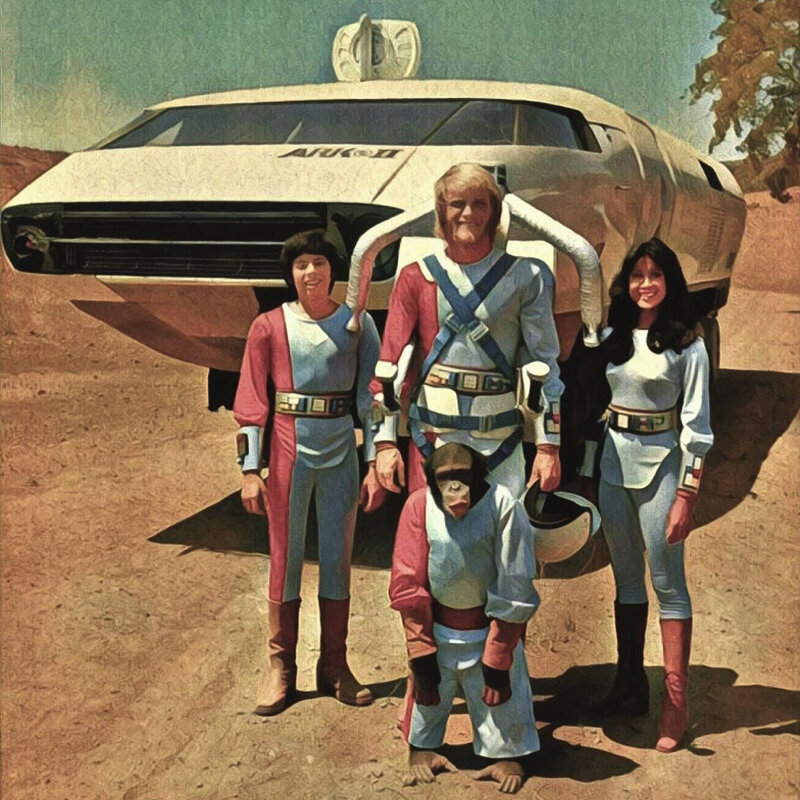Duty Now For The Future (part five)
Out with the show
As noted previously, indoor movie theaters are dead.
A handful of revival houses and cinematheques and movie clubs will remain in existence, and thanks to Blu-ray technology and laser projection, maybe even a few neighborhood / community theaters but the big multiplexes are dead.
Drive-ins will make a small comeback. Already some restaurants and setting up / partnering with drive-ins to combing a dining and viewing experience; expect more of that in the future.
Drive-ins would be a lucrative addition to a failing / abandoned mall. The parking lots could be converted relatively easily (drive-in parking lots need a slight hump for the front wheels of the vehicle to rest on so they angle up enough for vehicle occupants to enjoy the picture).
The food court reopens, offering a much wider selection range.
Sound is provided through each car’s radio via short range FM system (this was already fast becoming the norm as drive-ins started their precipitous decline). Digital laser projection supersedes noisy arc light film projectors (alternatively, large screen digital displays as already in use at stadiums and the Las Vegas strip can show movies during the drive-ins business hours then convert to advertising the rest of the time).
Finally, most of the mall’s interior property is still available for shops or businesses to rent.
. . .
Live is not dead
Live performance venues will falter with dinner theaters picking up since the spacing of tables will create at least the illusion of safe social distancing.
Jamming people into stadiums for concerts or crowded music halls will always run the risk of disease spread, and a lot of people will be very wary of such things.
“Intimate” will become the new concept, with performers touring more but playing smaller venues. Venues will be more like old nightclubs or beatnik-style coffee houses; instead of rows of sets facing in one direction, tables and chairs to encourage people to keep their distance.
More ingenious theatrical stagings, with multi-media providing spectacle that many smaller venues could previously ill afford. Staying flexible enough to do small scale video / movie special events will also help.
Regions with large deserts can book outdoor concerts there with the pitch for safe social distancing and lots of sun / heat to kill any nasty bugs.
. . .
The tent pole is broken
Trace it back to Jaws, but for decades the concept of the tent pole franchise drove Hollywood’s marketing strategy.
The idea was release a big budget franchise at the beginning of summer, a big budget franchise at the end of summer, and they would be the tent poles that would encourage people to see the medium / small movies in between (there’s a smaller tent pole season from Thanksgiving to Christmas, too).
Well, that’s dead.
The climate change of the coronavirus pandemic heated up the big studios glacial movement towards streaming / on demand as their first major revenue stream.
Once they leave the theaters, there’s no going back.
The big studios will use their virtual monopolies to squeeze independent film / video / media makers out of the major streaming services.
Let ‘em.
Low budget / ultra-low budget / no-budget media projects will blossom as streaming and micro-payments become the norm. More of them will be driven for reasons other than pure profit, they’ll be labors of love by fans and fanatics, by those desperately seeking stardom on any scale, by outliers and outragers.
Most of them will stink, of course, and look woefully amateurish, but that won’t matter.
Big budget movies need large audiences in the millions.
Ultra-low budget / no-budget media only needs audiences in the tens of thousands.
Heck, many of them don’t even need audiences, they just need to be.
They will seep into pop culture from all directions and try as they might, the majors won’t be able to block them, and in the end the ultra-low budget / no-budget types will eat away at the majors’ base.
And that will be bad news for the majors.
. . .
Everything old is even older now
There will be a rapid change in public tastes as people will want something new, not nostalgic looks back (though there will be a smaller audience of old timers for that). Expect radical changes in art / literature / music.
I’m a student of pop culture. Dime novels were a huge mainstay in American culture in the late 19th / early 20th century.
The twin body blows of the First World War and the Spanish Flu pandemic destroyed that form of entertainment.
Oh, there were still cheap popular fictions being published, and the genres found in dime novels -- romance / mystery / crime / adventure / westerns / even sci-fi in the form of Frank Reade Jr, boy inventor -- still flourished, but the style and approach of the old dimes novels dated badly.
They became “quaint”.
Musical tastes changed drastically, too. Ragtime and the earliest forms of jazz existed before WWI, but the real explosion in form and style didn’t come until afterwards.
The pulp era replaced the dime novels, James Bond and Playboy replaced the pulp era, Fight Club and Quentin Tarantino replaced that.
We’re about to see the slate swept clean again.
Those of you who built your lives around the pop culture of old, enjoy what you have, but don’t count on it being your rainy day retirement fund.
Those of you who built careers on the pop culture of old, you better be fast learners.
© Buzz Dixon



